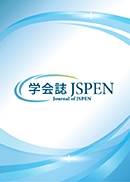Volume 4, Issue 3
Displaying 1-8 of 8 articles from this issue
- |<
- <
- 1
- >
- >|
-
2022Volume 4Issue 3 Pages 109
Published: 2022
Released on J-STAGE: February 10, 2023
Download PDF (150K)
ORIGINAL ARTICLE
-
Article type: ORIGINAL ARTICLE
2022Volume 4Issue 3 Pages 111-116
Published: 2022
Released on J-STAGE: February 10, 2023
Download PDF (371K) Full view HTML -
Article type: ORIGINAL ARTICLE
2022Volume 4Issue 3 Pages 117-123
Published: 2022
Released on J-STAGE: February 10, 2023
Download PDF (586K) Full view HTML -
Article type: ORIGINAL ARTICLE
2022Volume 4Issue 3 Pages 125-131
Published: 2022
Released on J-STAGE: February 10, 2023
Download PDF (1682K) Full view HTML
CLINICAL EXPERIENCE
-
Article type: CLINICAL EXPERIENCE
2022Volume 4Issue 3 Pages 133-138
Published: 2022
Released on J-STAGE: February 10, 2023
Download PDF (403K) Full view HTML
CASE REPORT
-
Article type: CASE REPORT
2022Volume 4Issue 3 Pages 139-144
Published: 2022
Released on J-STAGE: February 10, 2023
Download PDF (2476K) Full view HTML
RESERCH REPORT
-
Article type: RESERCH REPORT
2022Volume 4Issue 3 Pages 145-150
Published: 2022
Released on J-STAGE: February 10, 2023
Download PDF (2280K) Full view HTML
-
2022Volume 4Issue 3 Pages 151
Published: 2022
Released on J-STAGE: February 10, 2023
Download PDF (564K)
- |<
- <
- 1
- >
- >|
